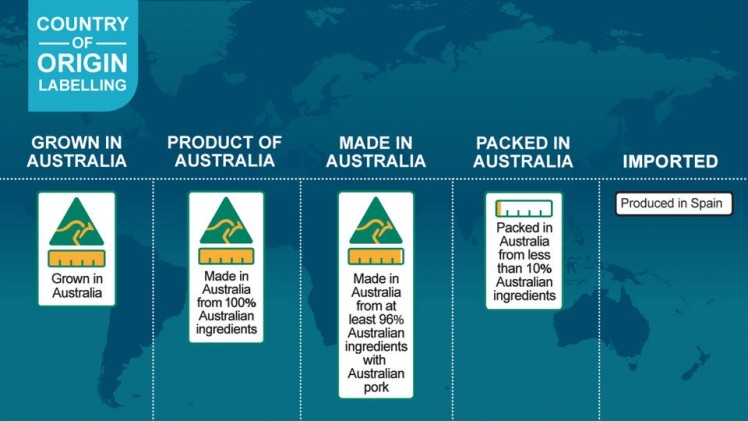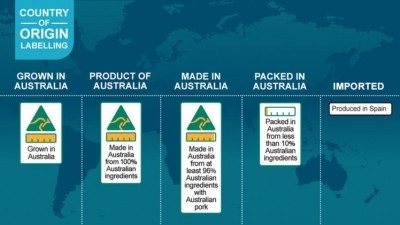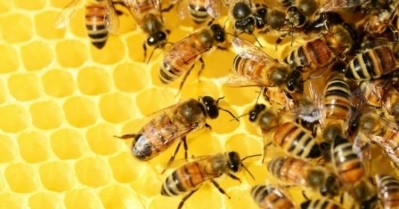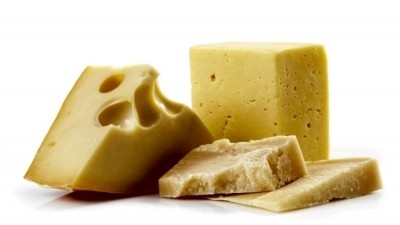Australia's Country of Origin Labelling rules come into force with spot checks for 10,000 items

Australian consumers will have much greater certainty about the origins of the food they buy due to the now mandatory CoOL, said both the Australian Competition and Consumer Commission (ACCC) and the Australia government.
All food businesses — including manufacturers, processors and importers that offer food for retail sale in in the country — will need to comply with the CoOL Information Standard, which specifies how claims can be made about the origin of food products being sold in Australia.
The labelling requirements vary depending on whether the food is classified as a priority or non-priority food, and if it was grown, produced, made or packed in Australia or another country.
Priority foods include meat, seafood, fruits and vegetables, most dairy products (such as milk, yoghurt and cheese), breakfast cereal, bread, nuts, honey and non-carbonated fruit juices.
Priority foods that are grown, produced or made in Australia will need to be labelled with a ‘three-part standard mark’ label, featuring the image of a kangaroo in a triangle, a bar chart showing the proportion of Australian ingredients in the food product and descriptive text of the product.
Non-priority foods include seasonings, confectionary, biscuits and snack food, bottled water, soft drinks and sports drinks, tea and coffee, and alcoholic beverages.
Non-priority foods will only be required to carry a country of origin statement (in text form).
“The new labels provide consumers with accurate information and real choice. Australians will now find it easier to choose products that match their preferences during their weekly shop," said Senator Zed Seselja, Assistant Minister for Science, Jobs and Innovation.
“Australian farmers and producers will see the benefits with consumers able to identify and choose to buy Australian products.”
The ACCC has said that the new requirements will apply to most food offered for sale in Australia, including food sold in stores or markets, online or from a vending machine. It currently excludes food service establishments and schools.
Surveillance checks
To ensure businesses are correctly displaying the new labels, the ACCC will conduct market surveillance checks on 10,000 food products.
“We have people on the ground to carry out these inspections and will initially focus on fresh or short shelf products sold by supermarkets, both large and small,” said Mick Keogh, Deputy Chair of ACCC.
“We will raise concerns with businesses where we believe there is an issue with country of origin labelling. As always, we are able to escalate cases which warrant stronger action.
“Some consumers are willing to pay extra for products grown, produced or made in Australia, and producers and importers should be aware that any claim which is likely to mislead consumers will also be a breach of the law. We just want to ensure that consumers can make informed choices and businesses have a level playing field to compete fairly in relation to these claims.”
CoOL requirements
According to the ACCC, to claim that a food with imported ingredients was ‘made in’, the food processing in that country must have created a product that is “fundamentally different in nature, identity or essential character” from the imported ingredients that went into it.
Minor processing, which only changes the form or appearance of imported goods, such as crumbing an imported prawn or reconstituting an imported juice concentrate, will no longer be enough to justify a ‘made in’ claim.
Imported foods must also display CoOL.
The ACCC, along with state and territory fair trading agencies, is responsible for enforcing the standard.
Seselja affirmed, “Any business that fails to comply with the new requirements or deliberately misleads consumers may face action.”
Industry reaction
Australian fruit firm SPC publicly declared it welcomed the regulations, in local media.
“As well as making it easier for consumers to reach for Australian produce, these new changes signify a levelling of the playing field for Australian producers as well as provide additional support for farmers, local production and jobs,” said Simone Coté, marketing and innovation general manager of SPC.
“SPC supports the transparency these regulations bring, with Australians often mislead by the impression that certain packaged products are Australian, when in fact they’re not.”
Meanwhile, not all firms have taken it well. Food South Australia chief executive Catherine Sayer told ABC that the regulations could cost Australian businesses "millions and millions of dollars" to redesign packaging to meet requirements.
Australia’s food labelling reforms commenced on 1 July 2016 and businesses were given two years to transition.
Food Standards Australia New Zealand (FSANZ) said CoOL is voluntary in New Zealand and suppliers may choose not to display this information, with the exception of grape wine.



















